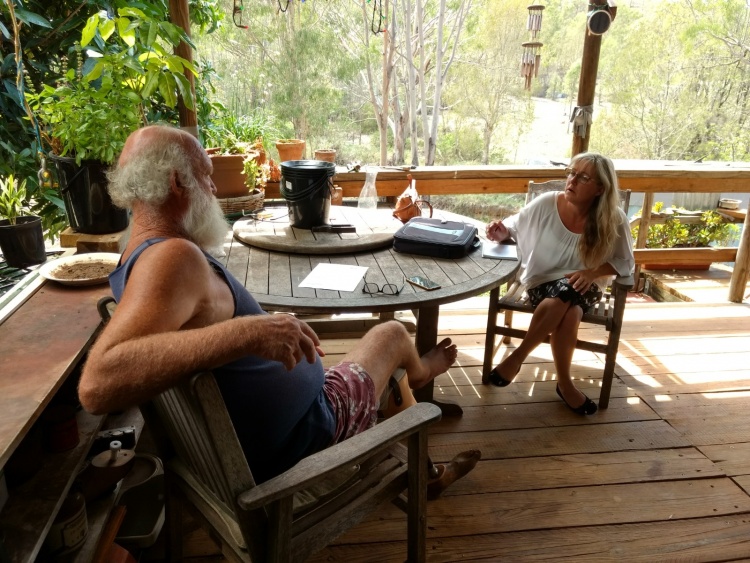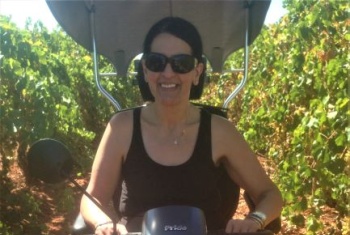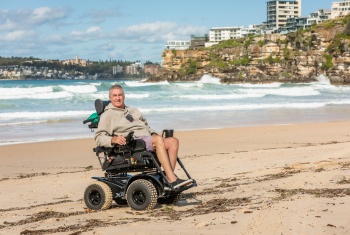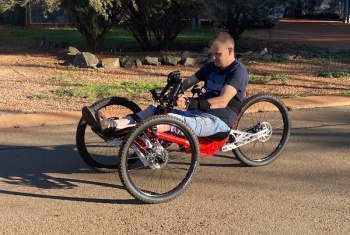61-year-old John is living in paradise on a quiet bush block in Mount Morgan, nestled in the hills southwest of Rockhampton.
The downside of rural living is the risk of bushfire, and until John joined the NDIS, he couldn’t always stay on top of the grass on his steep allotment, and sometimes lost his footing on the slippery leaves shed by the spreading mango trees.
“I’d never be able to get up there with a whipper snipper,” says John, looking out over the steep incline towards his fence line.
“Now I’ve got a clear boundary, and all my mango leaves which were basically a fire hazard have been raked up and put on my garden beds and fruit trees.
“I’m very happy. I cannot express my happiness for what the NDIS has done for me.”
In late 2019, John’s place was under threat by bushfires. John says, “I sat here with my sprinkler on my roof, watching the helicopters with their little buckets of water flying right over here, I could see the orange glow on the other side of the hill.
“That brought home to me how lucky I was to be on the NDIS, because we had just by chance raked up all the leaves, which meant I felt a lot safer from embers.”
John now feels more confident about being able to handle similar situations that he may face in the future.
As well as help with yard maintenance, the NDIS has allowed modifications around John’s home including installing grab rails and a fold-down waterproof stool in the shower.
“Now I’ve got a bathroom that’s equipped and ready for me to have a shower easily, I don’t know how I was doing it before,” John says.
Other modifications include a concrete path to replace an uneven dirt track from the carport to the house, and lighting so John can see where he’s going at night.
“I’ve slipped and fallen before out there,” John recalls. “Now it’s level, and I’ve got security lights so when I come in at night the light comes on and I can see where I’m walking.”
John’s also getting support to get out and about, and be an active part of his community like any other healthy retiree.
“You never know what you haven’t got until you get it,” John muses.
“I would never have thought, not while my bum pointed to the ground, that I’d have gone to an art gallery, or to the markets. I would not even have considered going to the swimming pool. But that’s progress.
“The good thing is, I’m not doing it by myself and being a Johnny No Friends. Someone to go with makes it easier.”
John says one of the best things about the NDIS was getting a ‘wet leg’, a waterproof prosthetic that can be safely worn in water and around wet areas like beaches and swimming pools.
“My old legs I couldn’t get wet, they were timber and leather.”
“When they gave me that wet leg and I walked into the ocean – I don’t think people know the pure joy of that ability to walk into the ocean, rather than having to hop on soft sand.
“When I was young, hopping on soft sand for a short distance wasn’t that hard, but now it’s virtually impossible for me. Whereas now I can walk into the ocean, the dam, the pool, and turn around and walk out again.
“It’s a revelation.”



